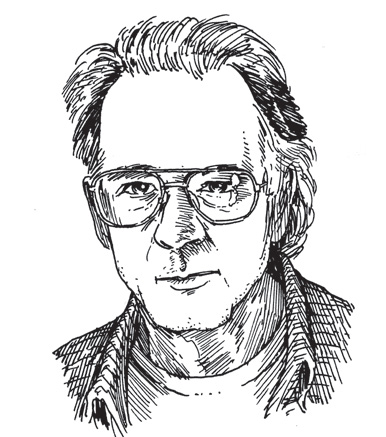Since 1972, Denis Wood has published numerous articles, books, and lectures aiming to broaden the public conception of cartography. His book and curated Smithsonian exhibit, The Power of Maps, criticized the notion of the map as a neutral reference material and revealed the governmental and legal biases behind the most innocuous-seeming topographical illustrations. He sees the map as a unique tool able of conveying surprising information on a 2-D plane and to be an artwork of aesthetic sublimity. His maps are, he insists, arguments.
Wood’s most recent book, Everything Sings: Maps for a Narrative Atlas, is a collection of visual representations of Boylan Heights, the small North Carolina neighborhood where he raised his children. Instead of standard data-based images, these maps depict the neighborhood as an aggregate of literally endless forms: the light that fills the streets, the delivery routes of local newspapers, the faces of pumpkins in front of homes at Halloween. The result is an impression of the lives of the people of Boylan Heights, and the influence of terrain upon them.
Recently, I spoke to Wood over the phone about Google Maps, Civil War battlefields, Philip Pullman’s The Golden Compass, and the unexpected ways in which maps dictate our daily lives.
—Blake Butler
I. “WORDS MELTED ONTO THE LANDSCAPE LIKE CHEESE ONTO BREAD IN A FRYING PAN.”
THE BELIEVER: In the introduction to Everything Sings, you mention how Mercator’s idea of the atlas was this “cosmographical meditation of encyclopedic proportion,” meant to contain everything, but instead, it became a reference manual, an apparatus of supposed fact.
DENIS WOOD: Mercator had this idea of making a gigantic “cosmographical meditation of encyclopedic proportion” on the universe—that was a huge desire of his—but it wasn’t connected to any obvious commercial outcome. But from the very beginning, he sold the maps. And when he died¾he died before the atlas was ever finished, before even the map part of the atlas is finished¾the plates are sold, they turn into commercial gold. It happened really rapidly. They sell like crazy. So it’s about selling paper, and the things they can sell most easily are these maps. They’re decorative, they’re informative, and they’re modern. So they just move, and they go through edition after edition after edition, and are still being printed and published. So I think that’s what happens: the great glory of writing the encyclopedia of the universe is this mad, delusory dream, whereas maps are a way of turning industrial cellulose into money, by printing information on them, and selling them. Mercator was going to have a chronology of world history, a chronology of ancient history, he was...
You have reached your article limit
Sign up for a digital subscription and continue reading all new issues, plus our entire archives, for just $1.50/month.
Already a subscriber? Sign in





